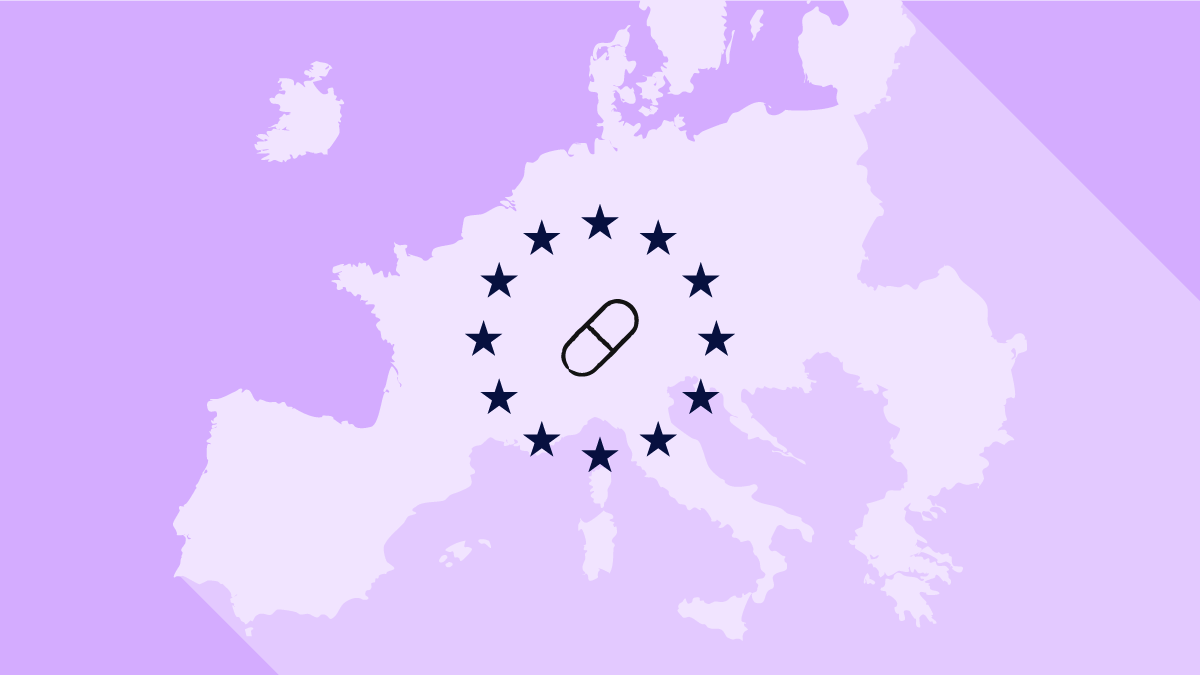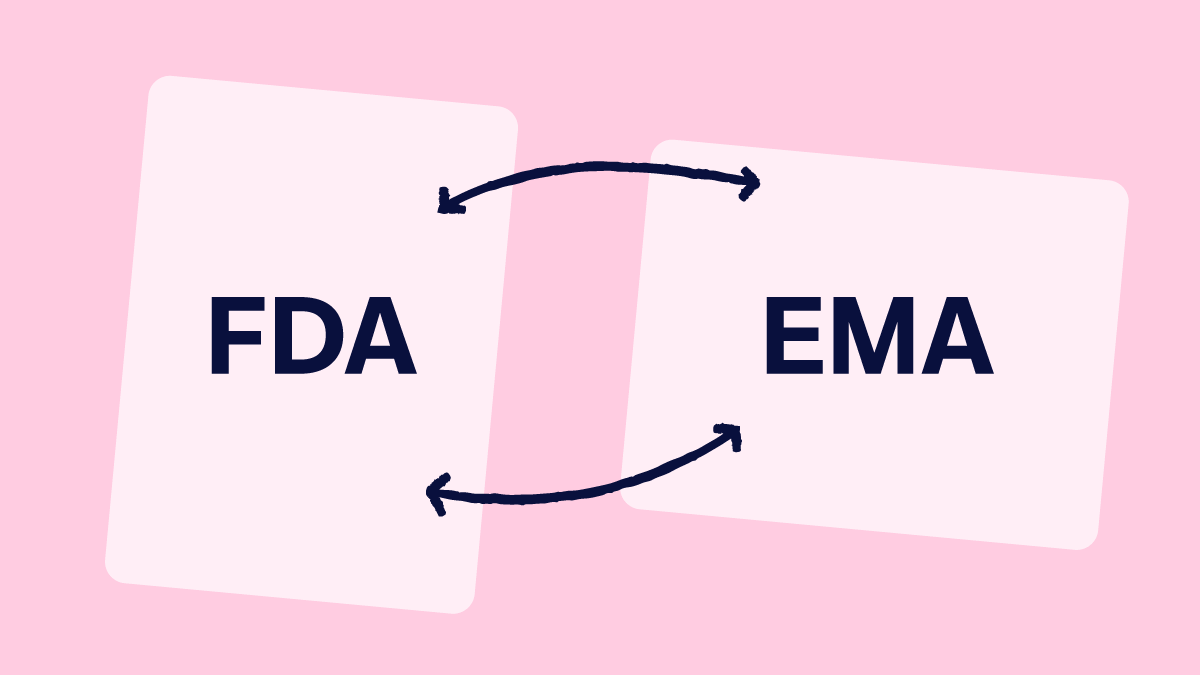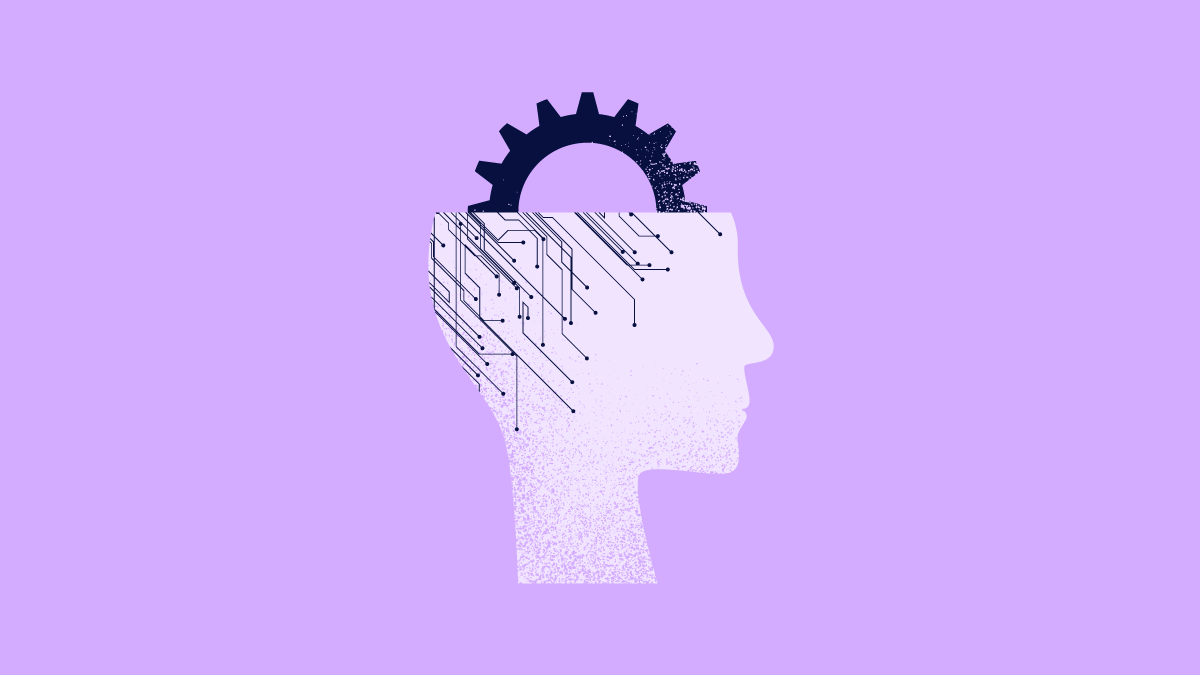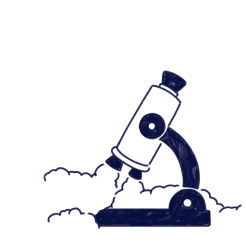
Every Quality Assurance (QA) professional knows that a Quality Management System (QMS) is the foundation of product safety and effectiveness in the pharmaceutical industry.
However, designing and maintaining such a system is increasingly complex in our world. As regulations tighten and the industry becomes more digital, as a QA professional, your challenge is not only meeting today’s standards but also preparing for future advancements and expectations.
On top of all the millions of other things you already do as a QA, of course. Talk about pressure…
But don't worry—this guide will show you how to build and maintain a compliant pharmaceutical QMS in the most effective way possible.
We’ll cover everything from the basics of pharmaceutical quality assurance to the core elements of a QMS in pharma and key regulatory requirements. We'll also address common challenges, implementation steps, best practices—plus show how quality management software like Scilife can lift the burden off your shoulders and make your life as a QA professional significantly easier.
Let’s get started!
Introduction to QMS in pharma
What is a pharmaceutical Quality Management System (QMS)?
A pharmaceutical QMS is a structured system designed to manage policies, processes, procedures, and responsibilities to consistently ensure and maintain uniform, high-quality standards in pharmaceutical product production.
Before approval for human use, all pharmaceutical products must meet strict standards and regulatory requirements, such as current Good Manufacturing Practices (cGMP), FDA 21 CFR Part 11, ICH Q10, among others, to ensure the strength, quality, and purity of active components.
A QMS is implemented to oversee the entire pharmaceutical product lifecycle, from development to testing, ensuring that the final product meets both regulatory standards and client expectations. It documents everything to keep track of all quality issues and solutions and employs monitoring methods such as Quality Assurance to prevent deviations.
If you’re interested in learning more about the fundamentals of quality and QMS, check out our Scilife Academy video:
What is pharmaceutical Quality Assurance?
In the pharmaceutical industry, quality assurance ensures the quality of products at every stage, starting from design and research to clinical trials and beyond. QA oversees all processes to guarantee that each product is tested, standardized, and meets safety and regulatory requirements.
Key responsibilities of QA in QMS management include:
- Ensuring that pharmaceutical products are safe, effective, and meet quality standards before reaching consumers.
- Investigation of defects and deviations with the appropriate stakeholders.
- Focusing on preventing issues rather than reacting to them, minimizing errors or defects.
- Reviewing and approving all quality-related documents (SOPs, WI, batch records, specifications, analytical records, protocols, etc) to ensure compliance with regulatory and internal quality standards.
- Conducting process validations to confirm that manufacturing procedures consistently produce high-quality results.
- Managing self-inspections and internal quality audits.
- Performing product quality reviews.
QA plays a vital role in keeping the QMS running smoothly, building trust with regulatory authorities and consumers while ensuring the delivery of safe, high-quality products.
Let’s just say, as a quality assurance professional, you certainly have a lot of plates to spin! But don’t worry we’ve written a blog to master pharmaceutical quality assurance in 11 steps that you can check out here!
Importance of QMS in pharma
Your QMS is not something you can afford to overlook, especially not in the current pharma business landscape.
Complex supply chains, data integrity issues, mergers and acquisitions, increasing regulations, and the rise of disruptive AI in pharma are just a few of the significant forces and changes the industry is facing.
For these reasons, the pharmaceutical industry has been making strategic investments, such as revamping their regulatory affairs departments and strengthening their QMS with electronic Quality Management Systems (eQMS) to help them:
- Develop a culture of quality
- Support documentation governance
- Support data integrity
- Reduce the time and cost of managing documents
- Identify and resolve problems in product development and manufacturing
- Manage supplier quality
- Ensure a trained and educated workforce
Scilife Smart QMS is a cloud-based pharmaceutical QMS software that can help you unify all your quality processes on one user-friendly platform.
Our eQMS integrates core QMS modules to simplify document management, change control, audit management, training management, CAPA management, supplier management, and more.
If you're interested in learning how we can help improve your quality management processes, book a personalized demo with our experts who are ready to assist you!
Key pharmaceutical QMS regulations, guidelines, and standards
Establishing and maintaining a QMS is a requirement enforced by agencies like the FDA and EMA for pharmaceutical companies. To ensure consistent, high-quality products, companies must implement a QMS that aligns with their specific regulatory requirements.
This means complying with relevant regulatory requirements that apply to your company’s:
- Geographical location
- Product type
- Target market
- Manufacturing processes
- Supply chain operations
- Distribution channels
You've probably come across terms like 'regulatory requirements,' 'guidelines,' and 'standards' in your daily work.
While they might seem interchangeable, there's actually a subtle but important distinction between all of them. Our infographic breaks down the differences, so you can navigate these terms with confidence.

Below you will find an extensive list of some of the most widely applicable regulations, guidelines, and standards for pharmaceutical Quality Management Systems.
While regulations define the “musts”, and guidelines suggest the “shoulds”, standards inspire the “how” of achieving quality excellence.
Pharmaceutical QMS regulations: Obligatory requirements
Regulations, like those set by the FDA or EMA, are strict baselines that pharmaceutical organizations must follow.
Think of them as the minimum standards your pharmaceutical company must meet, with each key regulation serving a unique role in ensuring product quality and patient safety.
These legally binding requirements mean compliance isn’t optional. Non-compliance with regulatory requirements can have serious consequences for your organization, including penalties, product recalls, and losing market approval.
Here are some of the key regulatory requirements in pharma:
Current Good Manufacturing Practice (cGMP): Ensures consistent drug quality standards
The current Good Manufacturing Practices (cGMP) are regulations established and enforced by the FDA and EMA. While you may already be familiar with GMP (Good Manufacturing Practices) and cGMP, it's important to note their subtle yet significant differences:
- GMP:
The foundational FDA regulation that ensures manufacturers take proactive steps to develop safe and effective products. - cGMP:
Expands on GMP by emphasizing continuous improvement, requiring manufacturers to adopt modern systems and technologies to uphold the highest quality standards.
Bear in mind that cGMP regulations serve as a baseline, outlining the minimum requirements for multiple manufacturing phases and quality aspects.
That said, complying with cGMP in pharma is mandatory for any organization looking to manufacture and sell products in regulated markets. Following GMP standards demonstrates to authorities that patient safety and drug effectiveness are a priority throughout your manufacturing process.
If you'd like to dive deeper, we highly recommend checking out our blog on the 5 main components of GMP or downloading our guide below.
FDA 21 CFR Part 210: Governs drug manufacturing processes
21 CFR Part 210 establishes the minimum current Good Manufacturing Practice (cGMP) requirements for the manufacturing, processing, packaging, or holding of drugs or drug products.
These regulations are designed to ensure that such products meet safety standards and possess the quality and purity attributes claimed by the manufacturer. Once again, compliance with this regulation is mandatory for pharmaceutical companies marketing and distributing drugs in the United States.
FDA 21 CFR Part 211: Define requirements for finished pharmaceuticals
21 CFR Part 211 outlines the minimum current Good Manufacturing Practice (cGMP) requirements for the preparation of drug products for administration to humans and animals, excluding positron emission tomography (PET) drugs.
These requirements apply to the manufacturing, processing, packaging, and holding of finished pharmaceuticals intended for human use.
The regulation encompasses a broad range of activities and stakeholders, including pharmaceutical manufacturers, contract manufacturers, contract packagers, and quality control units, ensuring that drug products meet safety, quality, and efficacy standards.
21 CFR Part 211 ensures that every step in the production process for finished pharmaceuticals is systematically monitored and controlled. It outlines detailed requirements across several key categories, including:
- Qualification and skills of personnel
- Facilities and equipment
- Control of components, containers, and closures
- Production and process controls
- Packaging and labelings
- Laboratory controls
- Records and reports
- Returned and rejected products
Get practical tips to ensure 21 CFR Part 211 compliance in our guide—plus, learn how to avoid the common mistakes manufacturers often make!
21 CFR Part 11: Governs electronic records and signatures
21 CFR Part 11, overseen by the FDA, establishes regulations for the use of technology in quality systems. It ensures that electronic records and electronic signatures are as trustworthy, reliable, and equivalent to paper-based records and handwritten signatures.
Part 11 applies to:
- Information that is generated and stored within an electronic system
- Records that are maintained in electronic format instead of paper format
- Records that are maintained in electronic format in addition to paper format
Check out our guide on compliance with electronic records and signatures under 21 CFR Part 11—plus, don’t miss the bonus video included!
EU GMP Annex 11: Focuses on computerized systems
EU GMP Annex 11 serves as the European equivalent of 21 CFR Part 11 in the United States, specifically for manufacturers planning to distribute products in the European market.
Finally, EU GMP Annex 11 focuses on the integrity and security of electronic records and signatures in all forms of computerized systems used as part of GMP-regulated activities. Its goal is to ensure that transitioning from manual operations to computerized systems does not compromise product quality, process control, or quality assurance. Additionally, it ensures that any risks associated with the overall process remain unchanged.
However, there are key differences between 21 CFR Part 11 and EU GMP Annex 11 that you should be aware of—explore them in our blog!
Scilife Tip:
Go beyond the bare minimum set by regulatory requirements. Integrate guidelines and standards into your QMS to proactively improve processes, reduce risks, and create a culture of quality.
Pharmaceutical QMS guidelines: expert recommendations
Guidelines, such as those from the International Council for Harmonisation (ICH), are non-binding recommendations that align with global regulatory expectations.
While not mandatory, they play a significant role in shaping compliance strategies by interpreting regulations and providing frameworks for implementation. In fact, regulatory bodies such as the FDA and EMA expect pharmaceutical companies to follow key guidelines such as:
ICH Guideline Q10: Focuses on pharmaceutical quality systems for lifecycle management
The ICH Q10 Pharmaceutical Quality System (PQS) is a guideline developed by the International Council for Harmonisation of Technical Requirements for Pharmaceuticals (ICH). The ICH uses a system of letters and numbers (e.g., Q8, Q9, Q10) to designate quality-related guidelines.
As for ICH Q10, it focuses specifically on Pharmaceutical Quality Systems.
This guideline applies to any company involved in the development and manufacture of active pharmaceutical ingredients (APIs) and drug products, including those in biotechnology and biological products.
ICH Q10 provides a model for an effective Pharmaceutical Quality System based on:
- ISO quality principles
- Good Manufacturing Practice (GMP) regulations
- ICH Q8 pharmaceutical development
- ICH Q9 quality risk management tools and principles
This guideline promotes a shift from traditional GMP compliance to a modern, holistic quality management system that emphasizes innovation and continuous improvement.
As a result, this framework helps pharmaceutical companies streamline their processes, improve product quality, and ensure compliance with regulatory standards throughout the entire product lifecycle.
We highly recommend reading our article on the ICH Q10 Pharmaceutical Quality System to learn more about this essential guideline.
ISPE GAMP5: Offers a risk-based approach to computerized system validation.
The Good Automated Manufacturing Practices (GAMP5), developed by the International Society for Pharmaceutical Engineering (ISPE), offers a framework for managing computerized systems in regulated environments.
GAMP 5 adopts a risk-based approach to the design, development, and maintenance of these systems, specifically in GxP-regulated environments. It is aimed at manufacturers, regulatory bodies, and other key stakeholders to ensure that computerized systems in the pharmaceutical and medical device sectors are properly validated and function as intended.
While the GAMP guidelines are not legally binding, they are widely referenced by regulatory agencies around the world.
Check out our GAMP 5 for GxP Compliant Computerized Systems blog to explore more about the principles and categories of this guideline.
Pharmaceutical QMS industry standards
Industry standards, such as ISO 9001:2015, go beyond regulatory and guideline requirements by focusing on broader quality management principles.
These standards emphasize efficiency, risk management, and continuous improvement, enabling organizations to build a more robust QMS that drives long-term success.
International Organization for Standardization (ISO)
As one of the most well-known global harmonized standards, ISO standards are issued by the International Standards Organization (ISO), founded in 1947 by a global team of delegates to ensure the safety and quality of consumer products.
The ISO standard most relevant to quality management systems in the pharmaceutical industry is ISO 9001:2015, which was updated in 2015.
The goal of ISO 9001 is to create a framework for documenting and evaluating the critical elements of an effective quality management system QMS, like structure, responsibilities, and processes. It is made up of key principles that are particularly relevant to a pharmaceutical QMS:
- Customer focus
- Leadership
- Engagement of people
- Process approach
- Continuous improvement
- Evidence-based decision making
- Relationship management
Organizations can get ISO 9001 certification to show they can consistently deliver products and services that meet customer needs and quality standards.
However, it’s important to note that ISO doesn’t handle the inspections or certifications directly. Instead, external auditors assess whether a company meets the ISO requirements.
Here at Scilife, we’ve helped countless life sciences organizations like QuaDigi and Hebias secure and maintain their ISO 9001 certifications. We encourage you to read their stories!
Looking for QMS software that ensures compliance with all pharmaceutical regulations?Scilife offers a user-friendly electronic Quality Management System (eQMS) specifically designed for the pharmaceutical industry.Our system supports full compliance with ISO, ICH, cGMP, and EU standards. Scilife’s software also complies with FDA 21 CFR Part 11 and EU GMP Annex 11, ensuring adherence to electronic records, electronic signatures, and computerized system guidelines.We also offer a comprehensive GAMP5 validation package, handling the majority of the validation process for you.
How to implement a pharmaceutical quality management system
A Pharmaceutical Quality System (PQS) includes a variety of elements and QMS processes, and there’s no one-size-fits-all way to implement it.
No two quality management systems are the same and every manufacturer should adapt their processes based on their product and the market. That’s why we always encourage QA professionals to stay up to date through continuous improvement and education. Here’s a list of the top pharmaceutical events and conferences worldwide that are worth attending.
Scilife Tip:
Do not ignore cGMP, ISO standards, or ICH Q10 guidelines. This can leave you vulnerable to mistakes and regulatory penalties. Having said that, we believe that adhering to the ICH Q10 guidelines is one of the best approaches for pharmaceutical companies.
ICH Q10 guidelines for pharmaceutical quality systems is a globally recognized standard that is widely adopted in the industry, and regulatory authorities often expect companies to follow these principles as part of their commitment to maintaining high-quality standards in drug development, manufacturing, and distribution.
To help you get started, we’ll share a quick overview of the scope and focus of the ICH Q10 PQS, so that you can get a better understanding of how to implement it.
For a more detailed overview, check out our detailed blog on how to create an ICH Q10 PQS.

ICH Q10 PQS life cycle stage goals
The ICH Q10 Pharmaceutical Quality System covers four essential stages of a product life cycle with each stage focusing on distinct objectives and specific technical activities:
- Pharmaceutical development: focuses on designing products and processes that consistently deliver the intended drug performance while meeting the needs of patients, healthcare professionals, regulatory authorities, and other stakeholders.
- Technology transfer: involves transferring product and process knowledge from development to manufacturing and between manufacturing sites.
- Commercial manufacturing: applies to maintaining control and driving continuous improvement throughout the product realization and distribution phases.
- Discontinuation: involves managing the end of a pharmaceutical product’s lifecycle in a controlled and consistent manner.

Management responsibilities
Management responsibility, as outlined in Section 2 of ICH Q10, highlights the importance of leadership in creating and maintaining a company-wide commitment to quality—making it an integral piece of the pharmaceutical quality system.
Strong leadership ensures that everyone in the organization understands the value of quality and is committed to upholding it throughout the entire pharmaceutical quality system.
By fostering an environment where quality is a top priority, management helps ensure that all employees are aligned in their focus on quality, driving continuous improvement, and meeting both regulatory standards and customer needs.

Management commitment
Management commitment is vital for a successful pharmaceutical quality system, with senior leadership responsible for system design, defining roles, supporting implementation, promoting continuous improvement, and allocating resources to ensure its effectiveness across the company.
Quality policy and planning
Senior management is responsible for establishing a quality policy and quality objectives that clearly define the company’s approach to quality, ensuring it aligns with regulatory requirements and supports continual improvement of the pharmaceutical quality system.
The policy, as a key component of the QMS documentation, should be communicated to all stakeholders, alongside clear quality objectives. Regular reviews and monitoring of quality key performance indicators (KPIs) are also essential to track progress and maintain the effectiveness of the quality policy.
Resource management
Your management team must allocate adequate resources—such as human, financial, , facilities, equipment, and material resources—across products, processes, and sites to ensure the effective implementation of the pharmaceutical quality system.
Internal Communication
It is impossible for quality assurance professionals to do their jobs effectively when they face communication bottlenecks. In an ideal world, relevant information should flow smoothly across all levels and departments, enabling a timely escalation of product quality and other issues when necessary. In accordance with ICH Q10, management is also responsible for ensuring that effective internal communication processes exist.
Management review
Management should conduct regular, formal Quality Management Reviews of the pharmaceutical quality system to evaluate progress toward quality objectives and assess performance indicators that measure the effectiveness of key processes and improve the effectiveness of your QMS.
Management of outsourced activities and purchased materials
In order to maintain quality standards, management has to ensure that outsourced activities and purchased materials meet quality standards. This is done through supplier selection, performance monitoring, and quality agreements. They must also assess risks, ensure compliance with regulatory requirements, and foster continuous improvement to maintain product quality.
Change in product ownership
Finally, during product ownership transitions, such as acquisitions, management should ensure a smooth transfer of relevant information and processes while clarifying the responsibilities of all parties involved.
Elements of a QMS in pharma

As outlined in ICH Q10 section 3.2, the Pharmaceutical Quality System (PQS) is founded on four essential pillars that support every stage of the product lifecycle:
- Process performance and product quality monitoring system
- Corrective and preventive action (CAPA) system
- Change management system
- Management review of process performance and product quality
By adapting these PQS elements to the specific needs of each stage, organizations can maintain a solid quality management framework that ensures the production of safe, effective products while fostering continuous improvement.
PQS enablers: Knowledge Management and Quality Risk Management

According to ICH Q10 Section 1.6, Knowledge Management and Quality Risk Management are key to successfully implementing the pharmaceutical quality system model.
These elements support the execution of PQS elements and enable science- and risk-based decision-making throughout the product lifecycle.
Knowledge Management
Knowledge Management is the process of capturing, analyzing, storing, and sharing critical information about products, manufacturing processes, and components. It ensures that valuable insights gained during development and production are accessible and used to enhance processes and prevent issues.
Quality Risk Management (QRM)
Quality Risk Management (QRM) is a proactive approach to identifying, assessing, and controlling risks that could affect product quality during development and manufacturing. By integrating QRM, your organization can better manage potential risks, ensuring consistent product quality and compliance throughout the lifecycle.
QMS VS eQMS in pharma: Moving away from paper
We’ve covered the basics, key pharmaceutical regulations, and how to implement a pharmaceutical quality management system following best practices. So, the next logical step is to think about what you’ll be implementing this QMS on: paper, digital, or hybrid?
- Paper: Traditional QMS method, where all documents and processes are maintained in physical form and rely on a manual approach.
- Hybrid: QMS managed with a combination of both paper and digital tools such as DropBox, SharePoint, and Excel spreadsheets among others and physical paper documents.
- Digital: QMS managed and stored digitally, often using cloud-based software that tracks and manages quality management processes electronically.
Nowadays if your organization is not using a fully digital QMS, then you’re most likely using the hybrid approach. While it still happens, very few pharmaceutical companies manage their QMS with the 100% paper.
Now let’s take a look at what that these look like in practice.

Now which one do you think is more efficient at managing your QMS and ensuring compliance? We think the answer seems pretty obvious.
If you look at the hybrid QMS, it can often feel a bit disjointed. But with a cloud-based eQMS, like Scilife, everything is integrated, organized, and seamlessly connected in one place.
The truth is that an eQMS offers significant advantages over a traditional or hybrid QMS because it does a much better job at dealing with all the common issues quality assurance professionals face in pharma, whether it’s managing CAPAs, dealing with supply chain complexity, or working with siloed quality management.
Common QMS challenges and how an eQMS resolves them
Data integrity challenges
The sheer volume of data generated in the life sciences industry makes it difficult to manage, store, and access critical information quickly.
Without standardized data management, pulling the right documents during an audit can become a major headache. Not to mention that data integrity is vital for all pharmaceutical companies to transition to Pharma 4.0.
That’s where an eQMS comes in. It streamlines data management by providing centralized, secure storage with built-in digital audit trails, ensuring data accuracy, compliance, and easier accessibility.
CAPA failures
If you work in QA, then you probably know the most common audit issues in pharma are caused by poor root-cause investigations and problems with your CAPA.
An eQMS can help you build a strong CAPA management system with a centralized, digitized platform that’s regularly reviewed and kept up-to-date. As a result, you’re able to detect deviations early which is the key to preventing quality issues and driving improvements.
Supply chain management and compliance
The pharmaceutical industry is one of the most regulated industries in the world, making supply chain compliance a constant challenge. Staying ahead by regularly updating processes, documentation, and training can be extremely difficult for teams.
However, with an eQMS you can automate tasks, minimize manual errors, and foster better collaboration across digital platforms, simplifying compliance management. This can lift a huge burden of QA teams.
Scilife Tip:
By understanding some of the most common hurdles QA professionals face, you can start taking proactive steps today. It’s like preparing for a boxing match, when you know a hit is coming, you can learn to dodge it.
In this blog, we break down the top QMS challenges in pharma, chances are, one of them will resonate with you. But as you'll find out in the next section, all of these common problems can be simplified if not resolved with modern QMS software.
Why paper puts your QMS in danger
Perhaps you looked at the diagram and acknowledged that a paper QMS is not perfect. You might even admit that an eQMS would do a better job at resolving some of the daily problems you face, but you’re still thinking:
“But, we’ve been fine with a paper traditional QMS”…
Yes, we hear this a lot. You’ve been managing fairly well on paper or with a hybrid approach, most likely because your organization is still small and growing.
But what happens when instead of hundreds of training records, you’re managing thousands? Will you be able to retrieve any training record easily during an audit with confidence they’re all signed and dated?
Scilife Tip:
Some pharmaceutical companies have managed well with paper-based and hybrid systems, but that doesn’t eradicate human error. It doesn’t take much for a document to go missing, or for key people to get left out of the loop because of misplaced paperwork.
The infographic below only touches on some of the issues we have seen collaborating with pharmaceutical companies over the years.

The one thing all these issues make you realize is that a paper QMS is more risk-prone than an eQMS.
You might think you're managing risk fine now, but as your company and data grow, it will become harder to keep track of all the details—and that's when things can slip through the cracks.
And we all know that when risk is managed inadequately, the consequences are often non-compliance, which can have serious, far-reaching effects. We won’t get into the details of what happens when you get an FDA 483 observation or a warning letter—but trust us, it’s not pretty.
All we’re going to say is that, if you’re a $10 million business, expect to shell out at least $1.5 million just to fix compliance issues. That’s not even counting the indirect costs or fines.
True story. Skipping an eQMS can turn into a million-dollar mistake. So, here’s the question: are you really going to trust your compliance to paper?
“Get started with an eQMS as soon as possible! We see no reason to wait and no reason to get started with an offline system first. It’s only going to become more challenging the longer you wait to transition.”
Bert Engelen,
Quality Manager at Amnovis
Benefits of an eQMS for pharmaceutical companies
If you follow the already discussed ICH Q10 guidelines, you could, in theory, implement a pharmaceutical quality management system using a manual, paper-based, or hybrid approach, but I'm sure you can imagine the challenges that come with it.
On the flip side, QMS software specially adapted for the pharma industry offers major benefits when it comes to efficiency, accuracy, and compliance.
It brings your entire QMS documentation, think quality policies, objectives, and procedures, into one digital platform, making it simple to create, store, and access documents electronically. Finally, your quality assurance teams have a single source of quality truth that helps them to streamline workflows and reduce errors.
Here are some key benefits of eQMS over a paper-based system to consider:
- Risk management: One of the biggest advantages of an eQMS is that it can drastically reduce risk. An eQMS does this by providing structured, real-time tools for risk management that allow you to identify, evaluate, and address risks in a more systematic, proactive way.
- Stress-free audits: With everything stored in the cloud, audits are faster and more transparent. The eQMS tracks changes and offers easy access to documents, so you’re audit-ready at all times.
- Cost efficiency: Over time, the automation and resource efficiency of an eQMS reduce operating costs, eliminating the need for physical storage and expensive setup fees.
- Smooth collaboration: A centralized digitalized system can drastically boost efficiency across departments and cut down on back-and-forth emails and document attachments.
- Digital signatures: Using an eQMS like Scilife, you can ensure regulatory compliance by tracking approvals and signatures, streamlining the approval process with automated, electronic signatures.
- Scalable & flexible: As your business grows, a cloud-based eQMS adapts to changing needs and regulatory demands.
- Focus on continuous improvement: With built-in analytics and trend tracking, an eQMS helps you pinpoint clear areas for improvement and measure the impact of changes.
- Training Management: In an eQMS, employees are able to sign off on training materials digitally for full accountability, but that's not all. When processes are changed, training can be automatically updated, and responsible individuals or roles are instantly notified of any retraining needed.
“I think finding a company like Scilife, who have a deep understanding of GMP and who will actually speak the language that you speak, is really important. You don’t want to have to explain the reasoning behind why you need something, which just slows everything down.”
Keryn Davies, Quality Manager at Helius
Choosing the best quality management software for the pharmaceutical industry
So, maybe you’re starting to picture what life would be like as a quality assurance professional with an eQMS in your organization. Pretty sweet, right? Yes, in this case, the grass really is greener on the other side.
But now, you’re probably thinking, "What features should I look for in QMS software? How exactly will an eQMS boost my compliance and efficiency?"
No need to worry; we’ve got you covered. We've dedicated an entire article to the best quality management software for life sciences.
Key features to look for in an eQMS
With years of experience working with pharmaceutical companies of all sizes, we’ve identified the key elements of an eQMS that we’ve built into our own solution, features we know are essential for success.
(Feel free to dive deeper into each one by clicking on the links below.)
- Document management software
- Quality events management software
- CAPA management software
- Audit management software
- Change control management software
- Risk management software
- Quality KPIs software
- Equipment management software
- Training management software
It might seem a bit confusing since everything’s labeled as "software," but think of it this way: all these different types of software, (basically, eQMS modules), come together to create the bigger picture of the overall QMS software.
They’re the core components of a pharmaceutical QMS that ensure everything is running smoothly and fulfilling its intended purpose.
At Scilife, we have many customers starting with document management and change control software for instance. From there, they add more features as their needs evolve. It’s that simple!
How Scilife's QMS software supports compliance and efficiency
An eQMS for pharmaceutical companies must meet a few essential criteria:
- It should come with pre-built workflows that align with regulations, automating the creation of documents and records.
- It must provide clear, documented evidence that you’re following the necessary procedures.
- It should be designed to meet the regulatory standards of life sciences, including GMP guidelines, ICH Q10, FDA 21 CFR Part 11, 21 CFR Part 210, 21 CFR Part 211, EU GMP Annex 11, ISO 9001:2015, and many others.
We’re proud to say that Scilife’s eQMS checks all these boxes.
Our GAMP5 validated pharmaceutical QMS software optimizes key quality management processes, including document management, CAPA management, change control, employee training, deviations, complaints, supplier management, audits, risk management, and more.
















